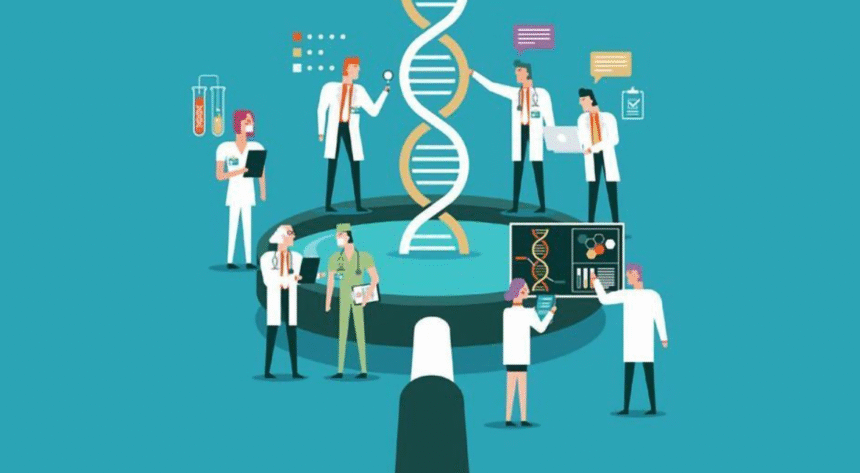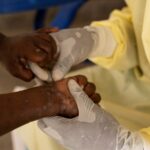Do you often wonder about your family’s origin? You might have heard of your great-grandparents but knowing anything beyond that might be rather difficult.
- The Role DNA Plays in Identifying Your Roots
- Interpreting your DNA results
- Finding distant relatives
- Tracking Ancestral Movement
- Learning Family Characteristics and Health Details
- Shortcomings of DNA Testing
- Melding Genealogy Research with DNA Testing
- Retracing Maternally and Paternally Traced Lineage
- The Use of DNA Matches for Constructing Your Family Tree
- The Future of Genetic Testing
- Final Thoughts
Today, the world of ancestry utilization has transformed immensely with the arrival of technology and genetic testing is one of the few processes that has refined the way ancestry discovery works.
Through a basic DNA examination, you can learn details about your history, meet family members you have never interacted with, and trace the incredible journey of your ancestors.
This article seeks to explore how ancestors can be discovered through genetic testing and what information can be gathered throughout the process.
The Role DNA Plays in Identifying Your Roots
DNA has a vast amount of information regarding your family lineage. As humans populated the globe, their DNA underwent gradual modification over thousands of years. Genetic markers are these slight transformations, and they enable experts to trace your family’s historical movements over time.
A genealogical test looks at your DNA in comparison with millions of other samples around the globe. This process subsequently categorizes the regions your ancestors lived, along with the different populations’ admixture that took place over centuries.
Interpreting your DNA results
Wanna know what is in your DNA? The first thing that most people notice when they receive their DNA results is a map detailing the regions their ancestors came from. Such maps are made by contrasting your DNA with different samples all over the globe.
An example of such results could be 40% of your DNA being from Europe, 30% from Asia, and the remaining 20% from Africa. Some tests go this further and break down these large regions to specific regions or even countries.
Results as such can sometimes be very revealing. A vast majority of the people who do such tests find out surprising things about their ancestry which, let’s be honest, is very fun and eye-opening.
Finding distant relatives
For many, the most fun part of genetic testing which has surprised many is finding relatives that you never knew existed. Many services allow one to connect with people who match a portion of their DNA, which makes it easy to trace these relatives.
You may find cousins in different areas of the world, or even meet with some family members who were, just like you, trying to find their roots. A lot of people have been able to reconnect themselves with biological family members via DNA testing.
Tracking Ancestral Movement
For a lot of people, DNA testing can reveal the traveling patterns of their ancestors. Certain services provide migration maps demarcating the regions your family has lived in over thousands of years.
For instance, you may have African roots, then traveled to Europe, then moved to North America. There is more to this story. Knowing these details makes you appreciate your family history even more.
Learning Family Characteristics and Health Details
Some DNA tests offer information on inherited characteristics and traits that can show multiple things about what’s in your DNA. These traits can account for your eye shape, preference for certain foods, or even hair color.
Some services additionally offer health-related information, indicating if a person has certain genetic markers that may impact their well-being. Although this is not a replacement for a healthcare practitioner’s support or guidance, it can be of value in learning about your body.
Shortcomings of DNA Testing
Even though genetic testing is a wonderful tool, it does have its deficiencies or drawbacks. The degree to which you can rely on the ancestry results depends on the company’s DNA database size. Some parts of the world are better represented which affects the detail of your results.
Another drawback is that tracing certain ancestors is not possible all the time. It can indicate your DNA origin but does not always provide information on who your great-great-grandparents were or what exactly is missing in your DNA.
Combining genealogy with DNA results tends to provide the best information.
Melding Genealogy Research with DNA Testing
Most people who want to make the most out of their genealogical research combine it with DNA testing. You can build a family tree through genealogy websites and historical documents, and with some luck, you might even identify the names and images of your ancestors. Finding your ancestors can be an exciting journey as you explore birth certificates, census information, and antique newspapers, all of which help match your family history to your DNA history. When blended, these aspects of genealogy help define the ancestry.
This integration bridges gaps left by incomplete records, allowing you to pinpoint lineages and cultural migrations encoded in your DNA profile. By cross-referencing genetic data with historical archives, you unlock a richer, more accurate narrative of your heritage.
Retracing Maternally and Paternally Traced Lineage
Genetic testing can assist in retracing maternal and paternal family lines through specific portions of an individual’s DNA that were inherited.
An individual’s maternal ancestry is traced through the maternal lineage, where children inherit mtDNA (mitochondrial DNA) from their mothers. Hence, perceiving further back into the family tree is of aid to men as well as women.
The recent developments in DNA testing have helped trace your father’s side as far back as you can remember when he took a test through the Y chromosome. This chromosome is unique to males, and can also be passed through females, enabling them to seek assistance from their fathers or brothers to get tested.
The Use of DNA Matches for Constructing Your Family Tree
One of the best features of DNA tests is obtaining familial matches due to the shared genetic code. Numerous testing companies store the data of people who underwent testing, and when you upload your DNA, the system compares it with others to search for family matches.
You probably have a long-lost second or third cousin out there, some even get to find half-siblings or family living in different countries. These products are effective in uncovering unknown parts of your lineage and family tree.
The Future of Genetic Testing
The technology behind genetic testing is improving immensely. The more tests people take, the bigger the databases become, thus increasing accuracy. There may be even more detailed ancestry breakdowns and better ways of linking you with distant relatives in the future.
Some scientists are trying to devise a way of utilizing DNA to predict ancient familial connections with much greater precision. This, in turn, may provide us with an even clearer idea of where exactly we stem from.
Final Thoughts
Indeed, genetic testing is one of the most effective means of delving into one’s ancestry as it helps uncover heritage, find relatives, and know the family history.
While has limitations, the combination of DNA results and genealogical research will surely provide rich details of the past. A DNA test may provide answers about your family history if you have ever been interested in it. What remarkable findings may you uncover?















